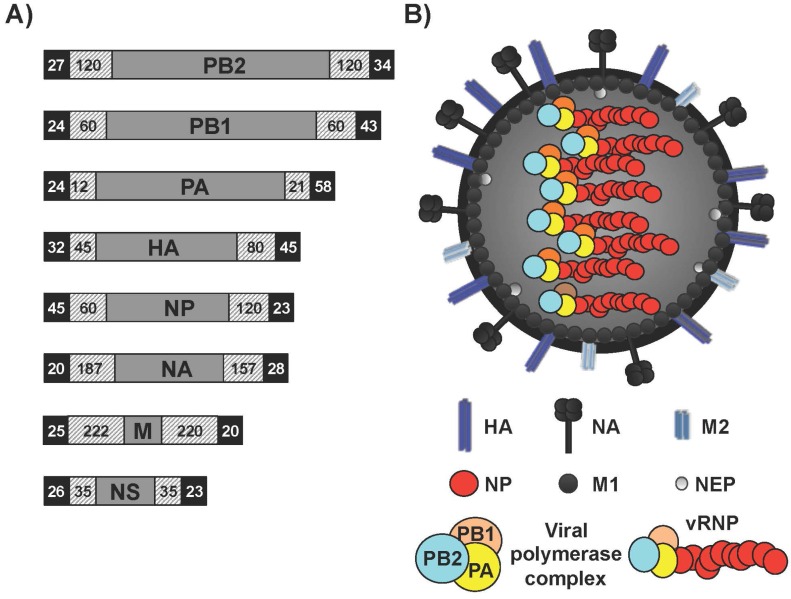Figure 1.
Influenza A virus (IAV) genome organization and virion structure. (A) Genome organization: The eight single-stranded, negative-sense, viral (v)RNA segments PB2, PB1, PA, HA, NP, NA, M and NS of IAV are indicated. Black boxes at the end of each of the vRNAs indicate the 3′ and 5′ non-coding regions (NCR). Hatched boxes indicate the packaging signals present at the 3′ and 5′ ends of each of the vRNAs that are responsible for efficient encapsidation into nascent virions. Numbers represent nucleotide lengths for each of the NCR and packaging signals; (B) Virion structure: IAV is surrounded by a lipid bilayer containing the two viral glycoproteins hemagglutinin (HA), responsible for binding to sialic acid-containing receptors; and neuraminidase (NA), responsible for viral release from infected cells. Also in the virion membrane is the ion channel matrix 2 (M2) protein. Under the viral lipid bilayer is a protein layer composed of the inner surface envelop matrix 1 (M1) protein, which plays a role in virion assembly and budding; and the nuclear export protein (NEP) involved in the nuclear export of the viral ribonucleoprotein (vRNP) complexes. Underneath is the core of the virus made of the eight vRNA segments that are encapsidated by the viral nucleoprotein (NP). Associated with each vRNP a complex is the viral RNA-dependent RNA polymerase (RdRp) complex made of the three polymerase subunits PB2, PB1 and PA that, together with the viral NP are the minimal components required for viral replication and transcription.

